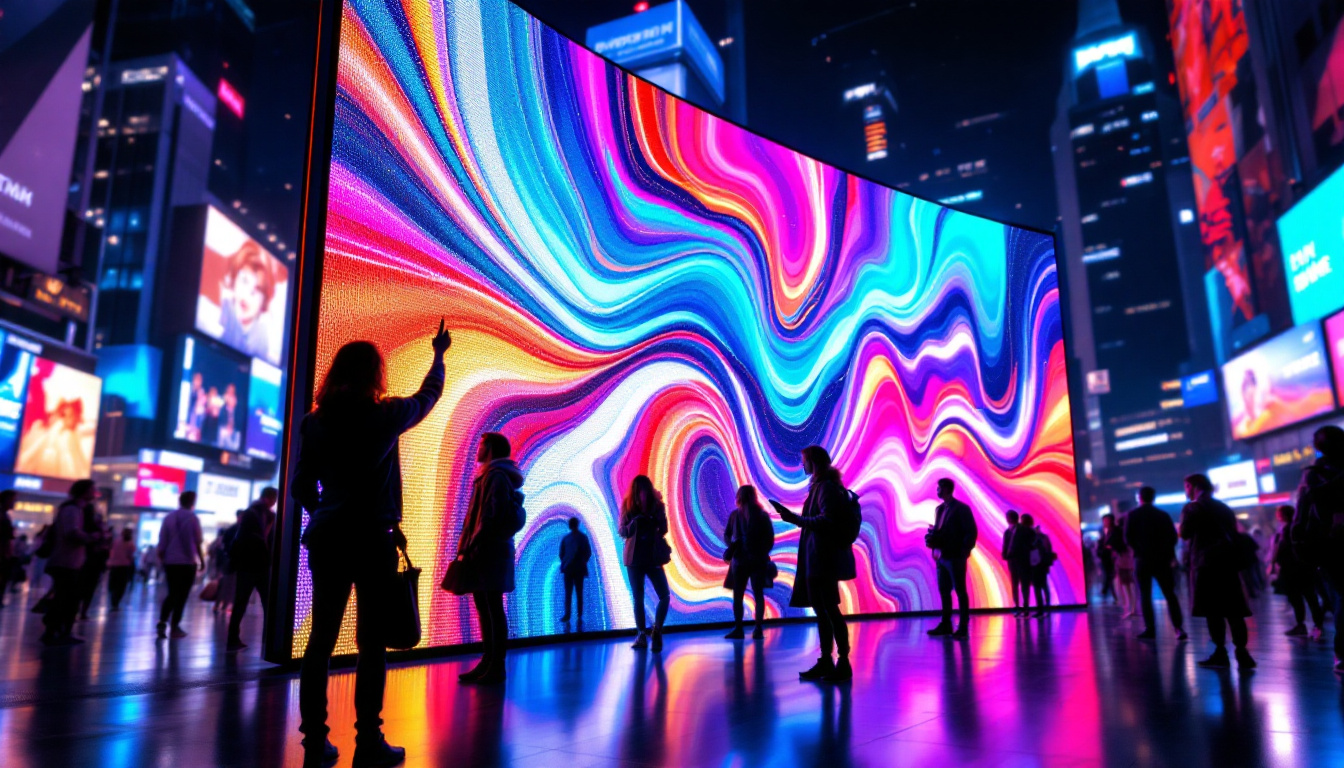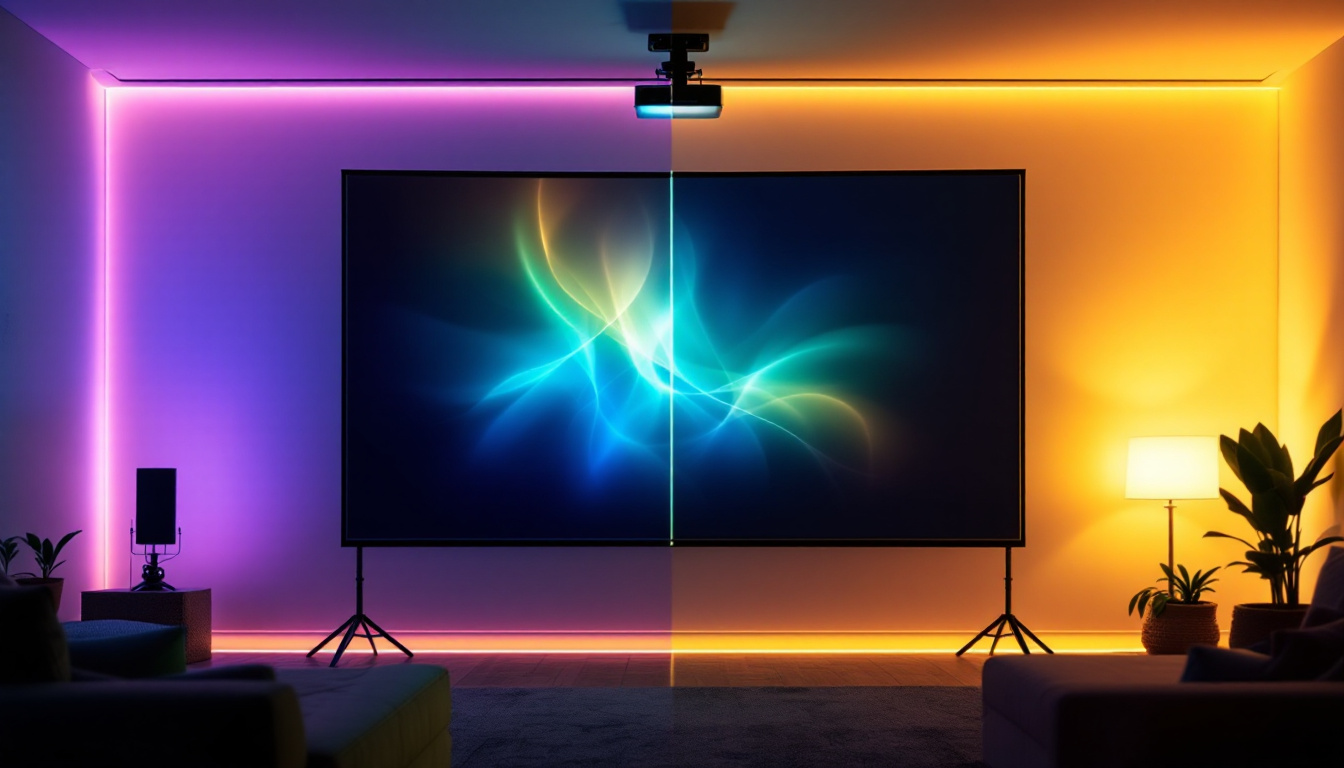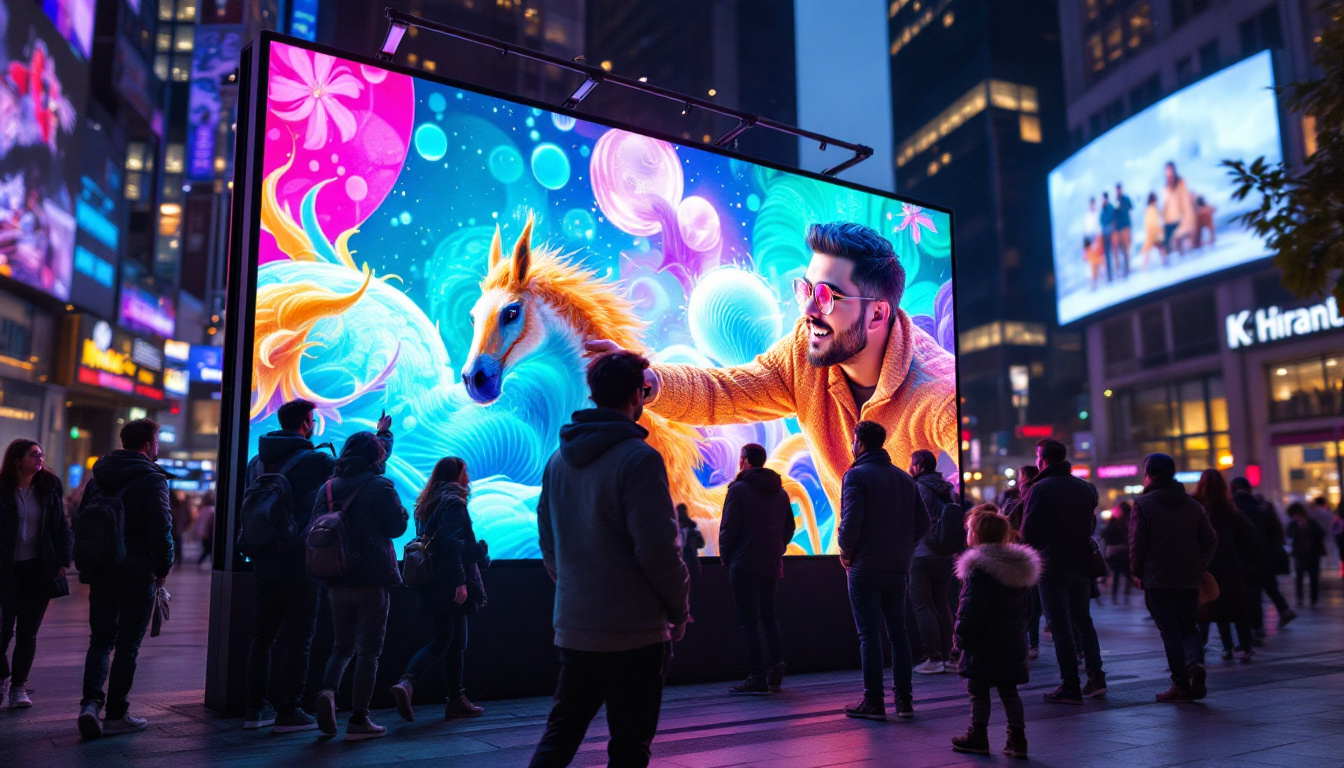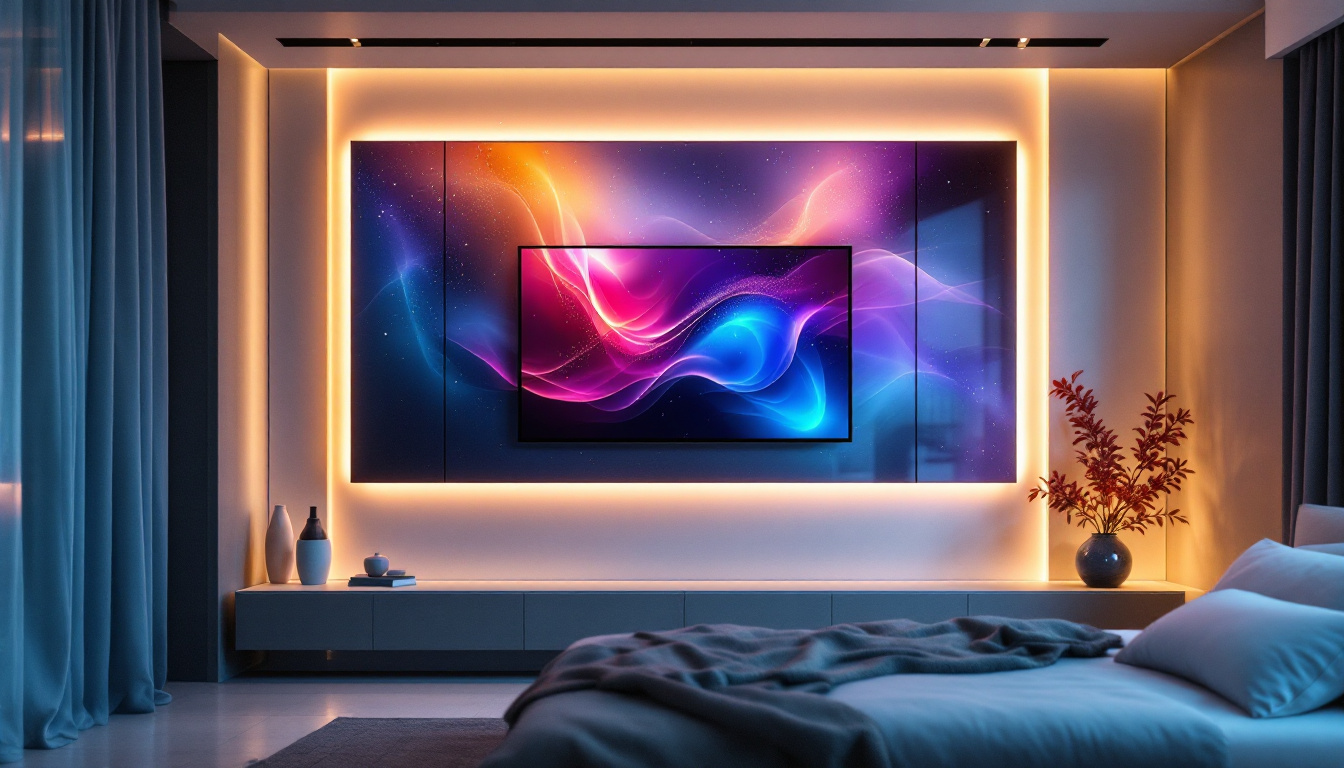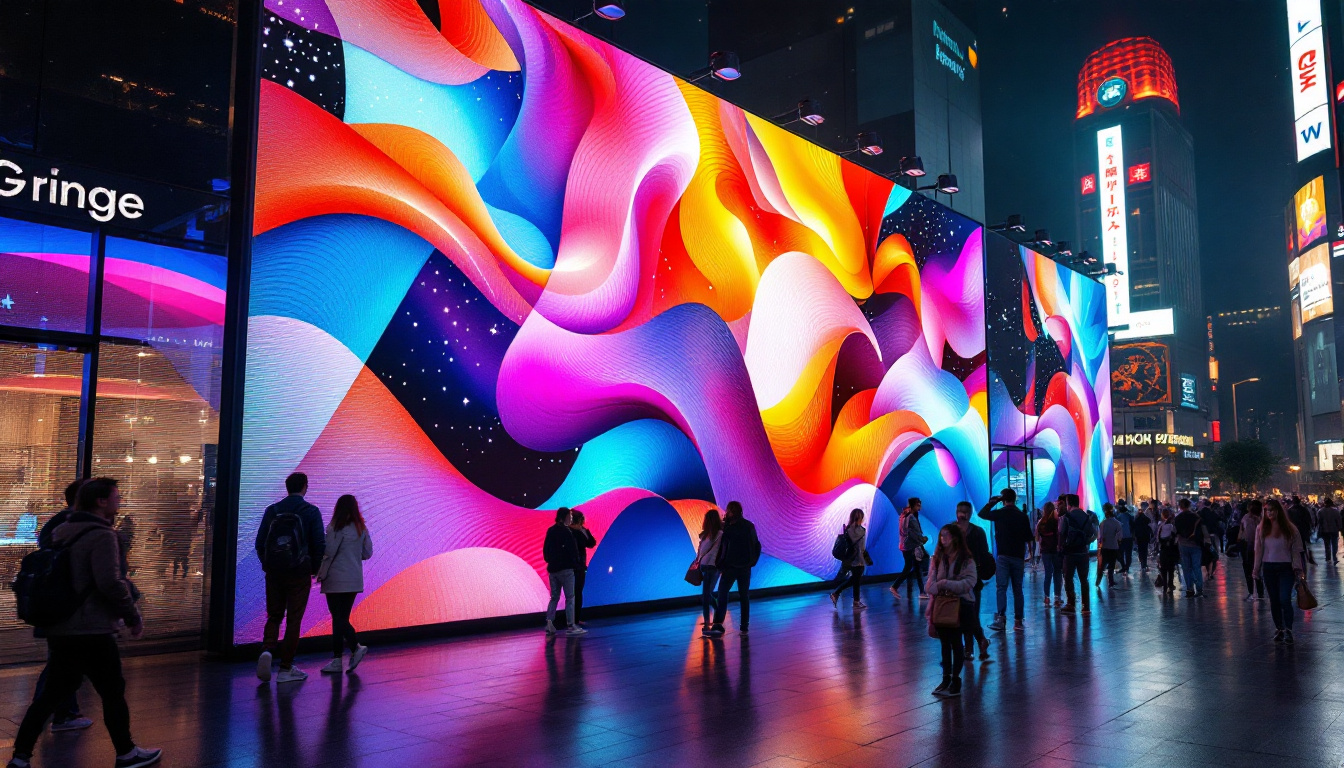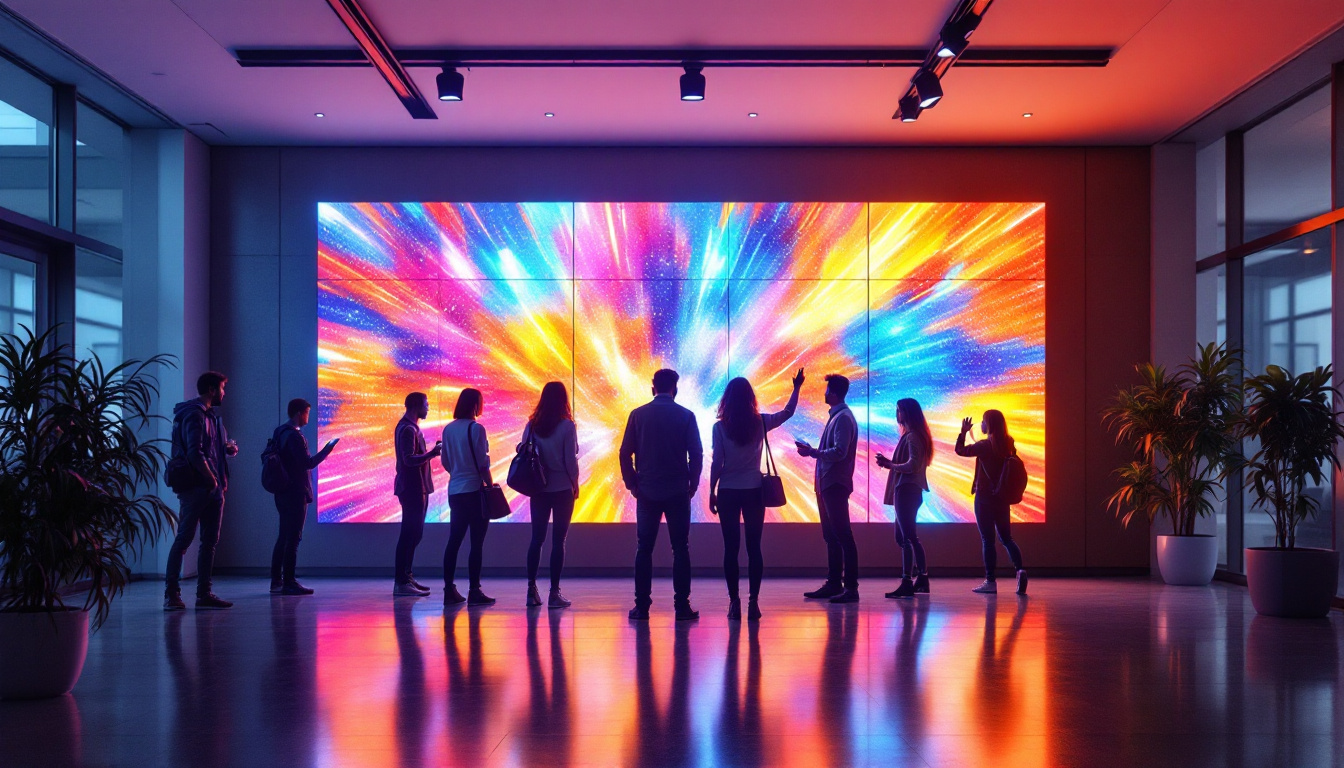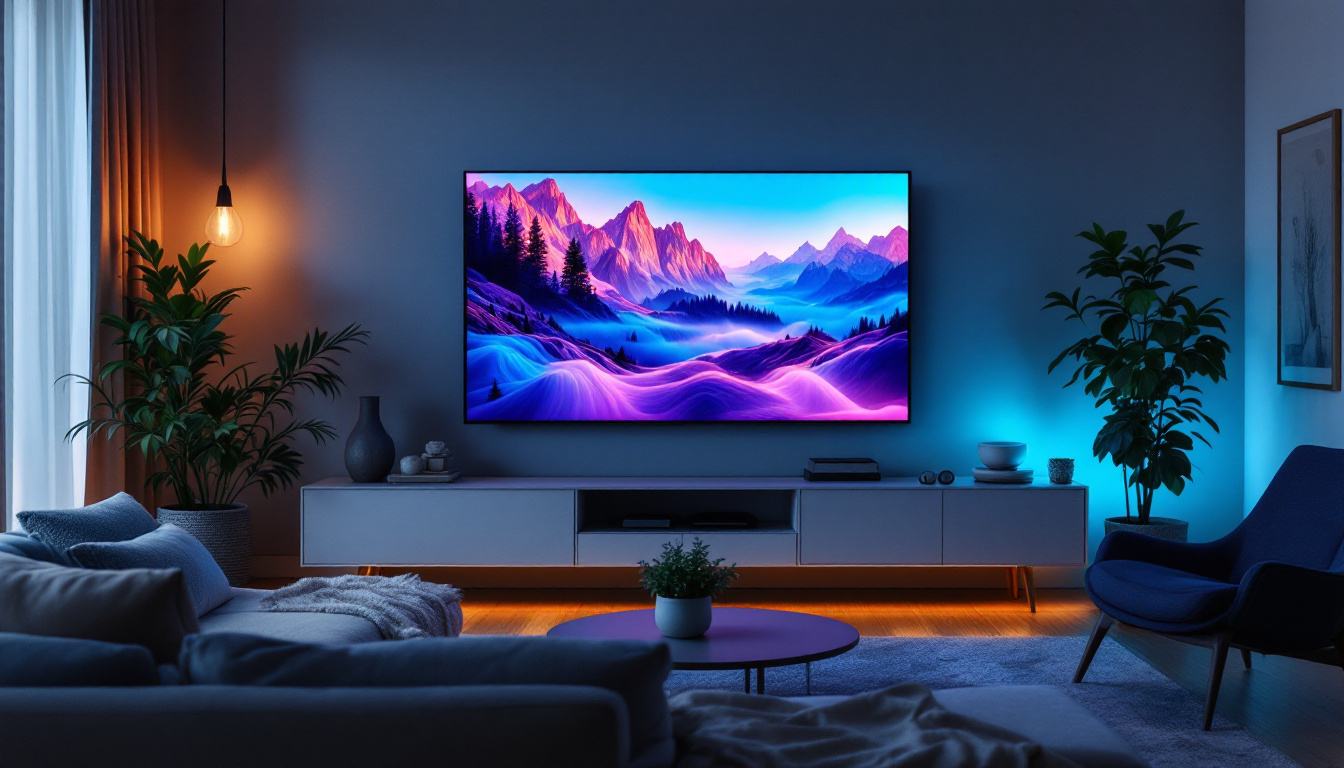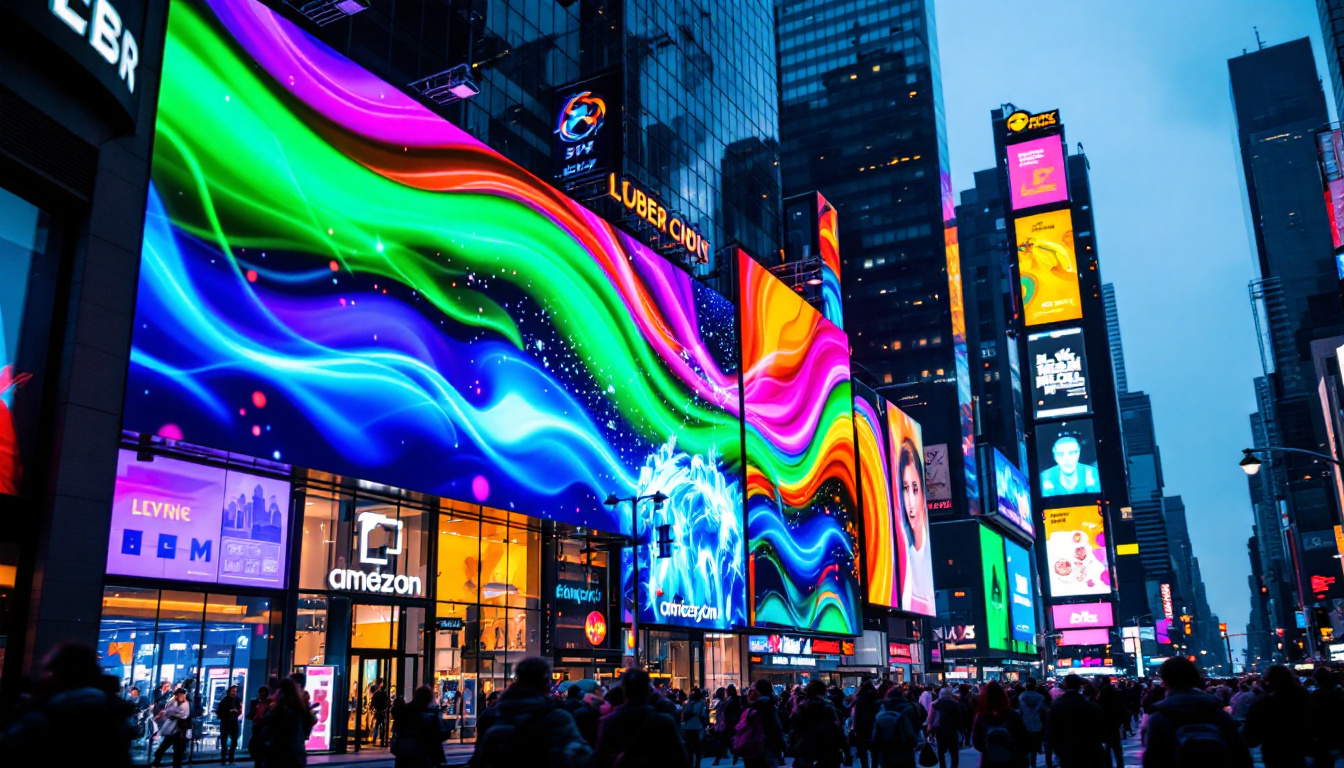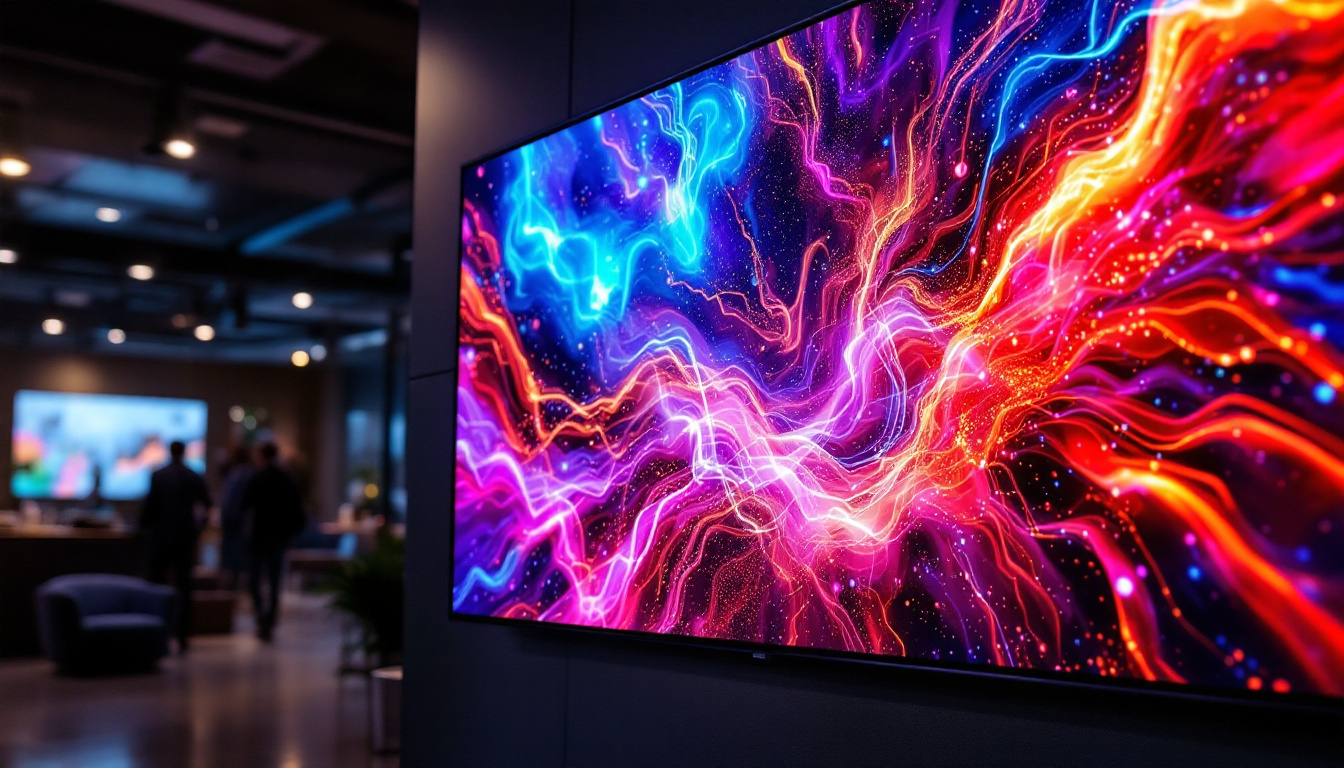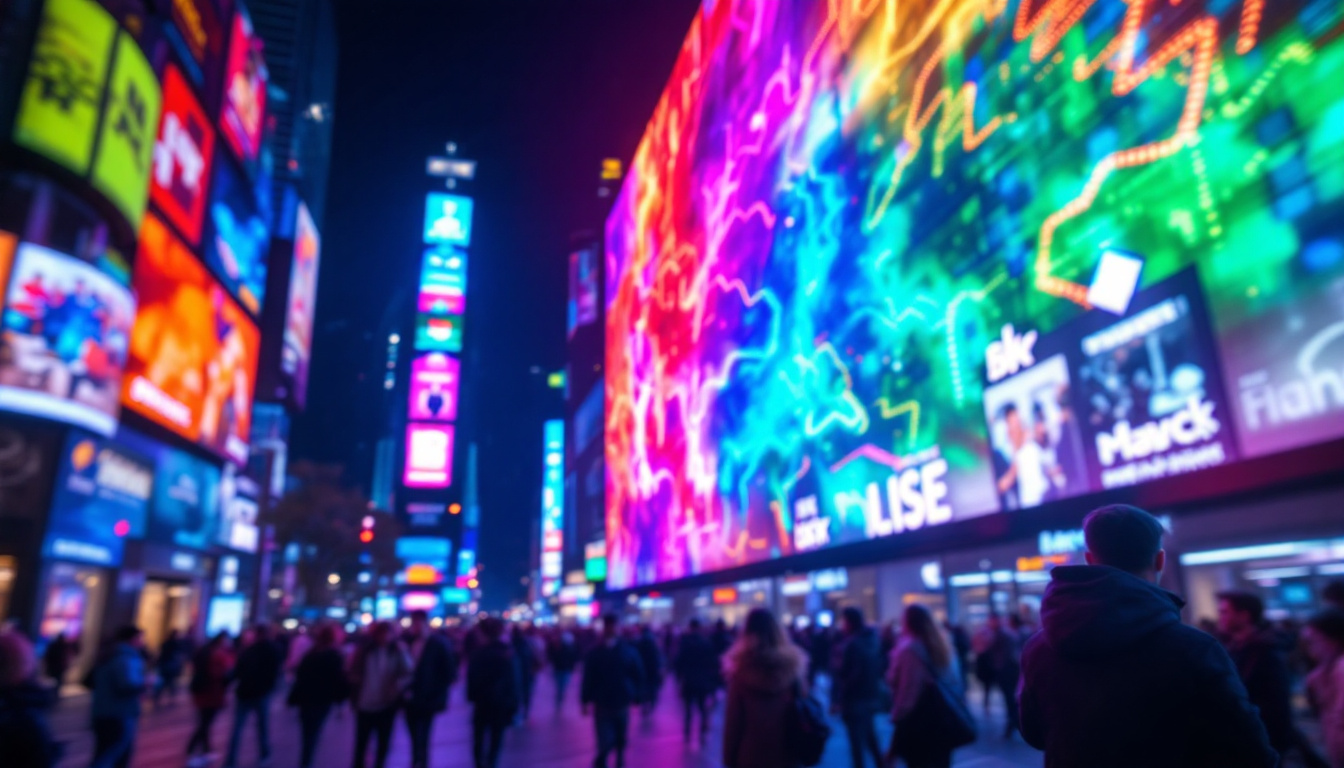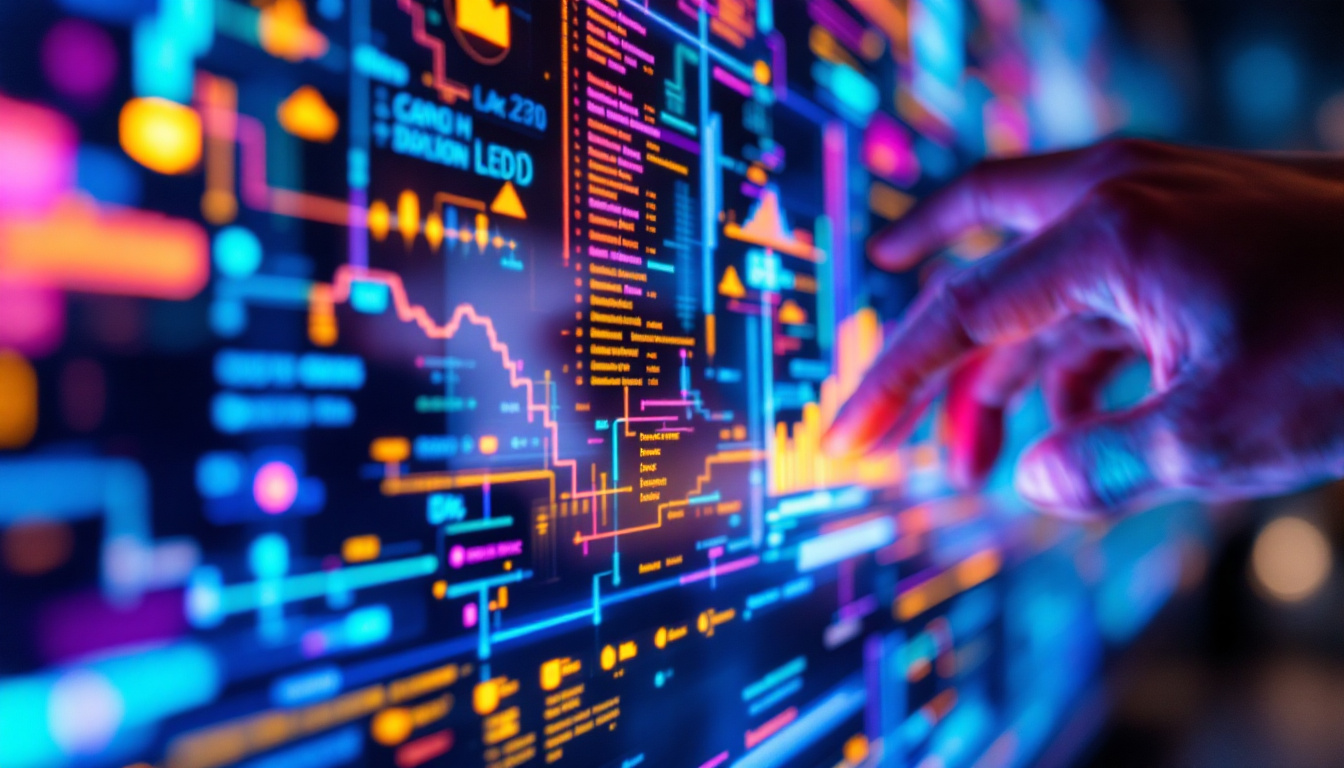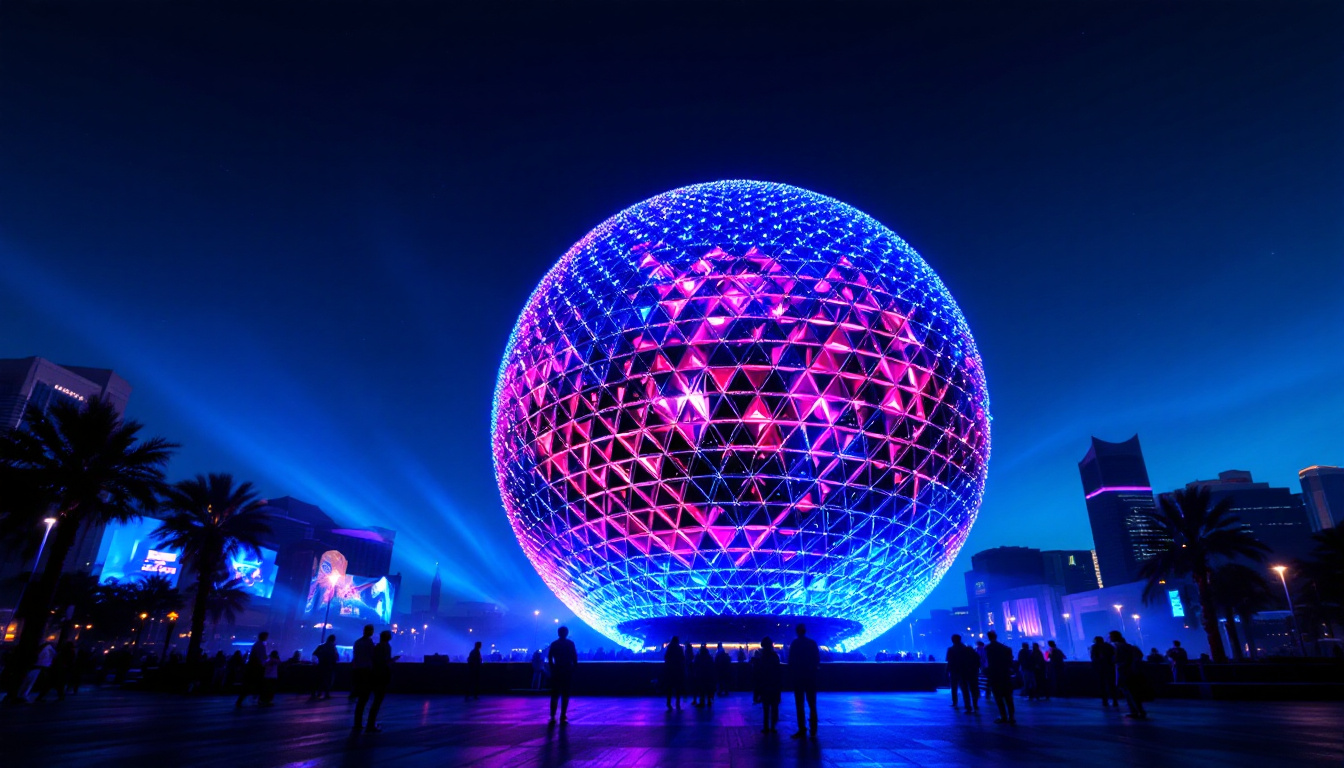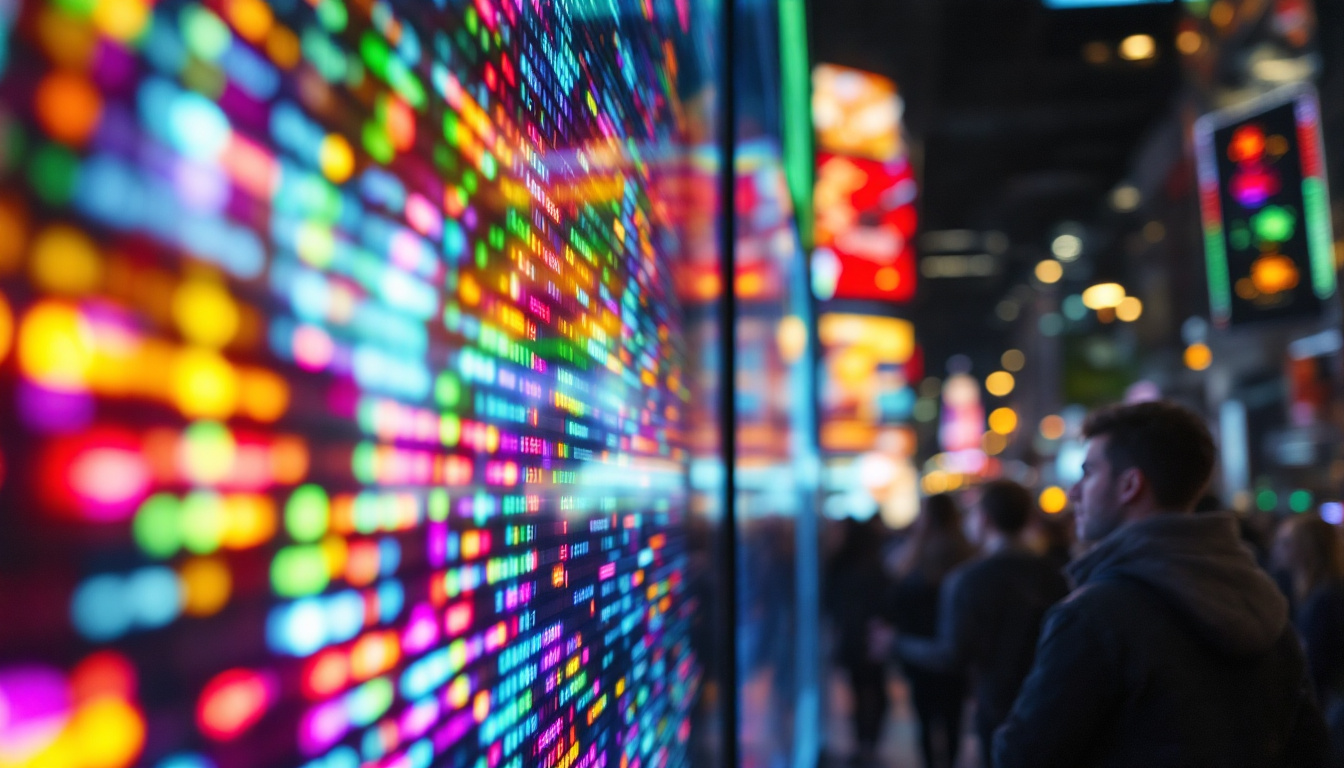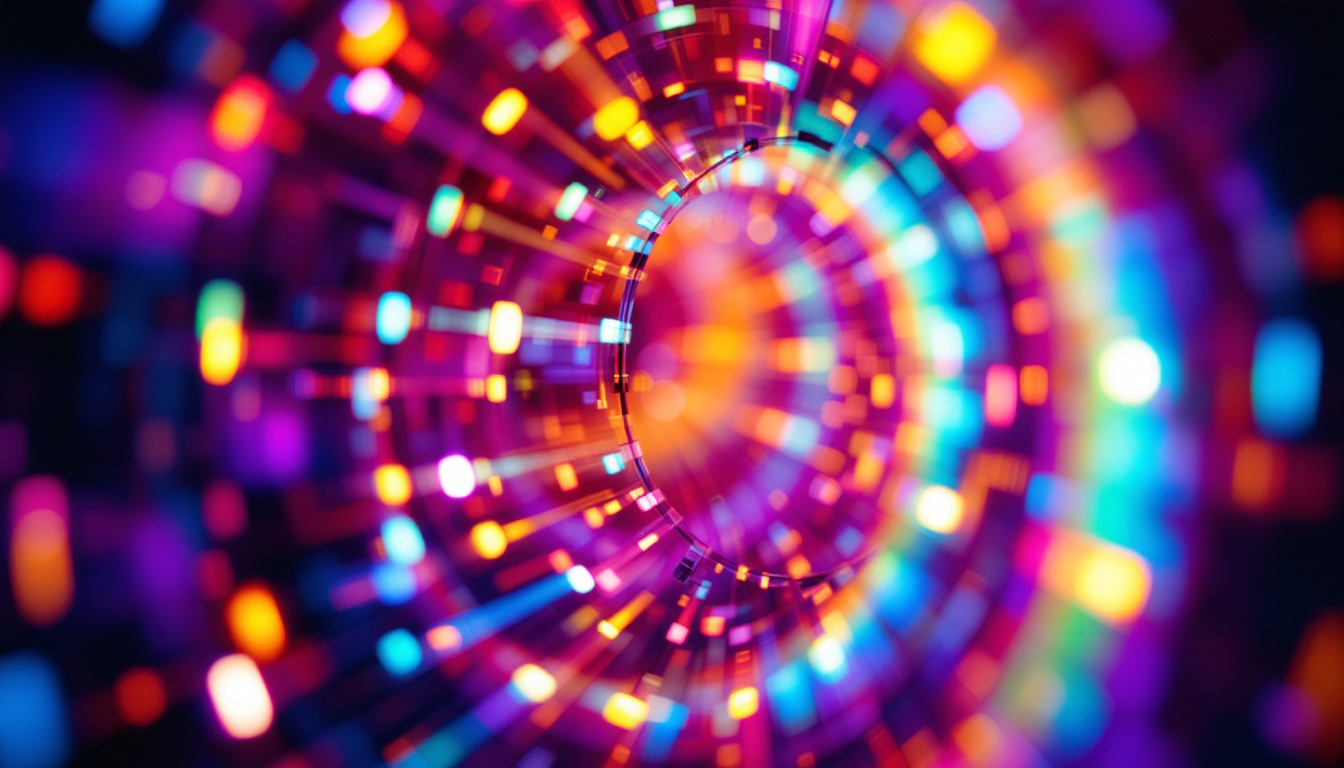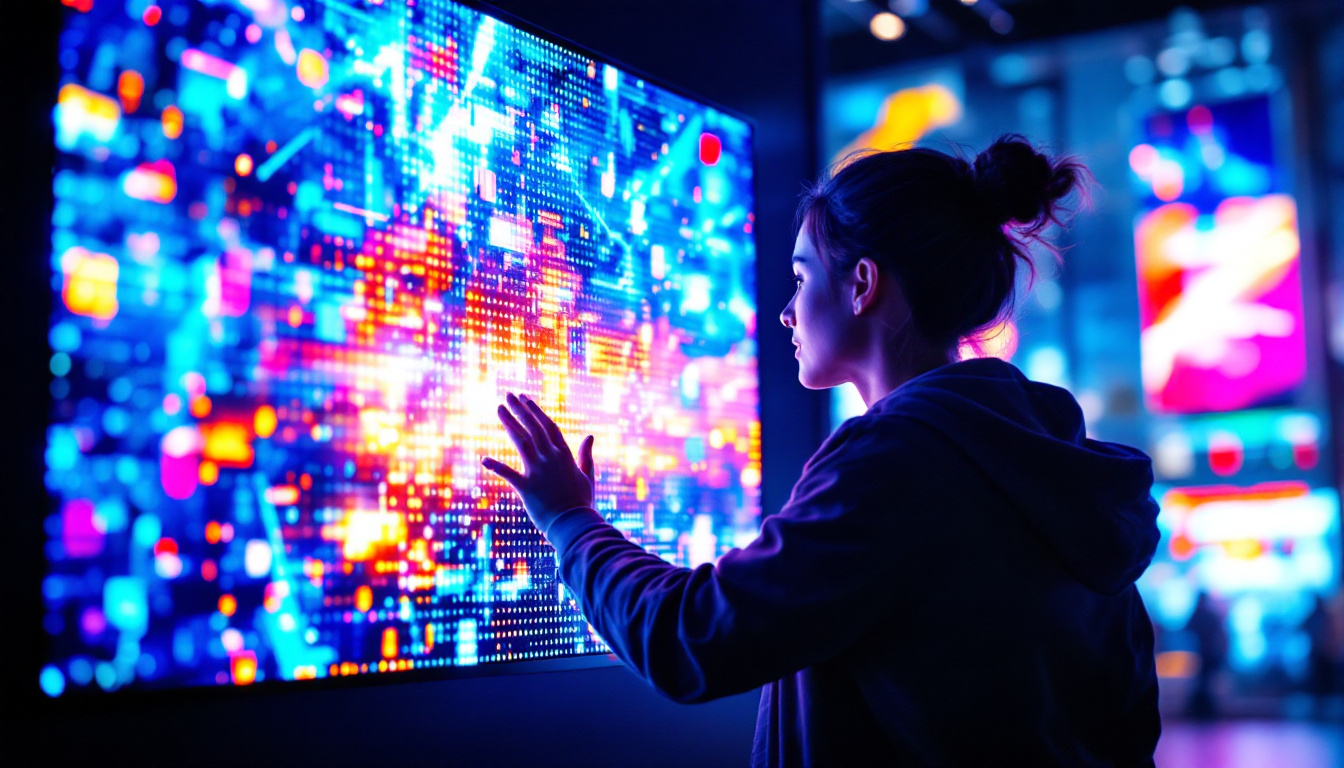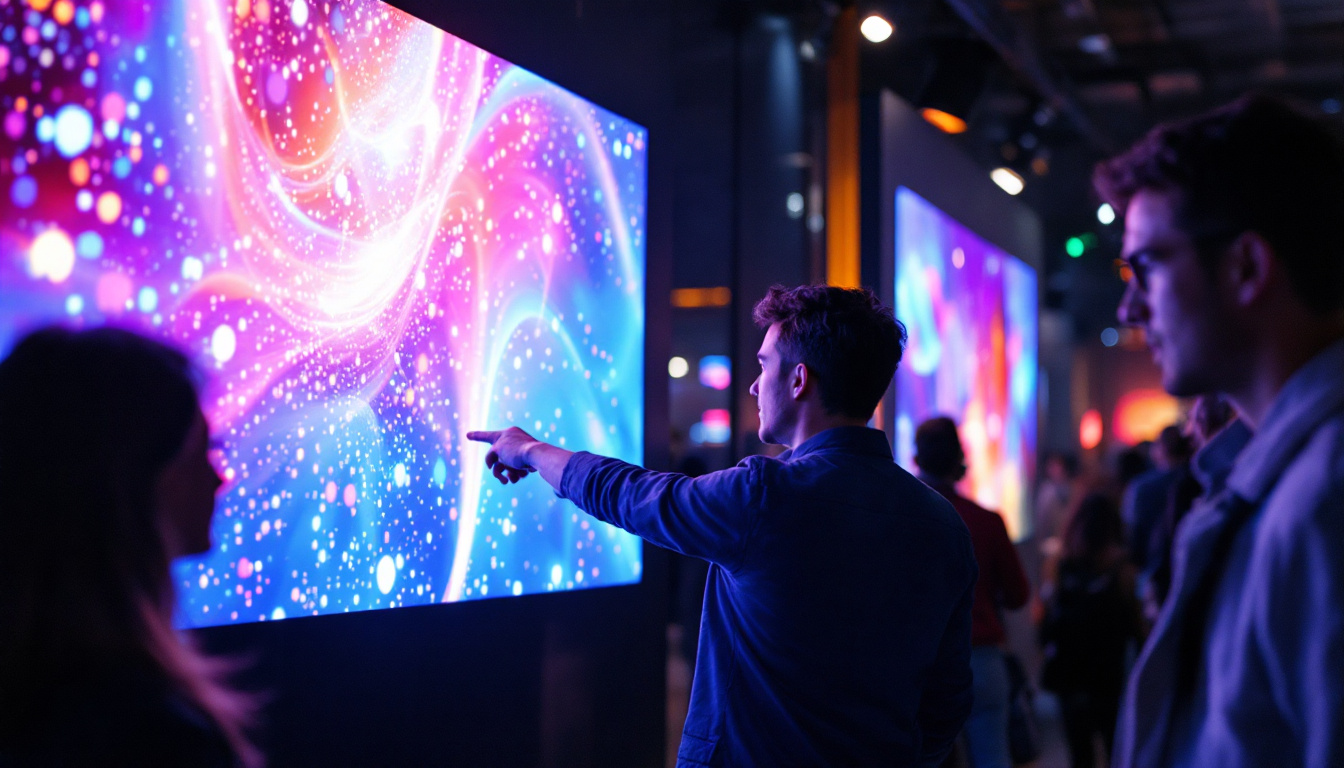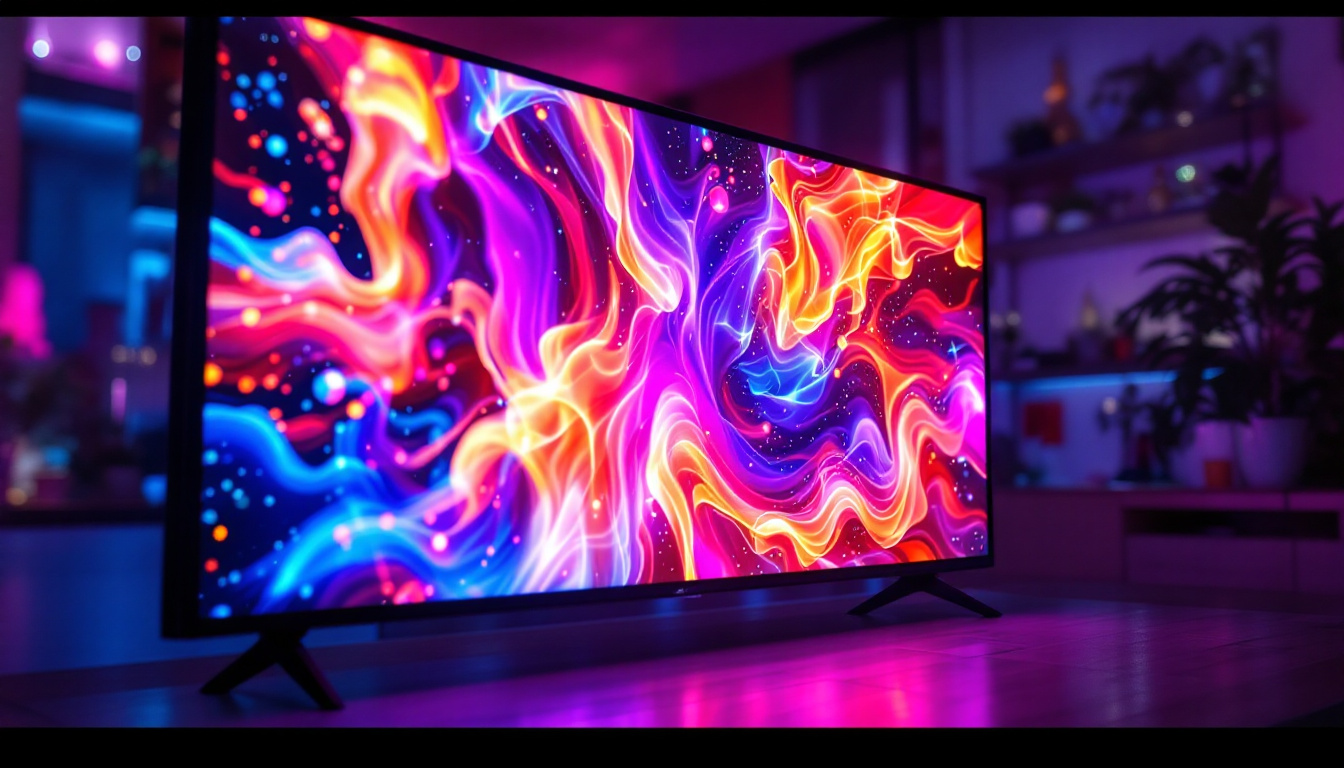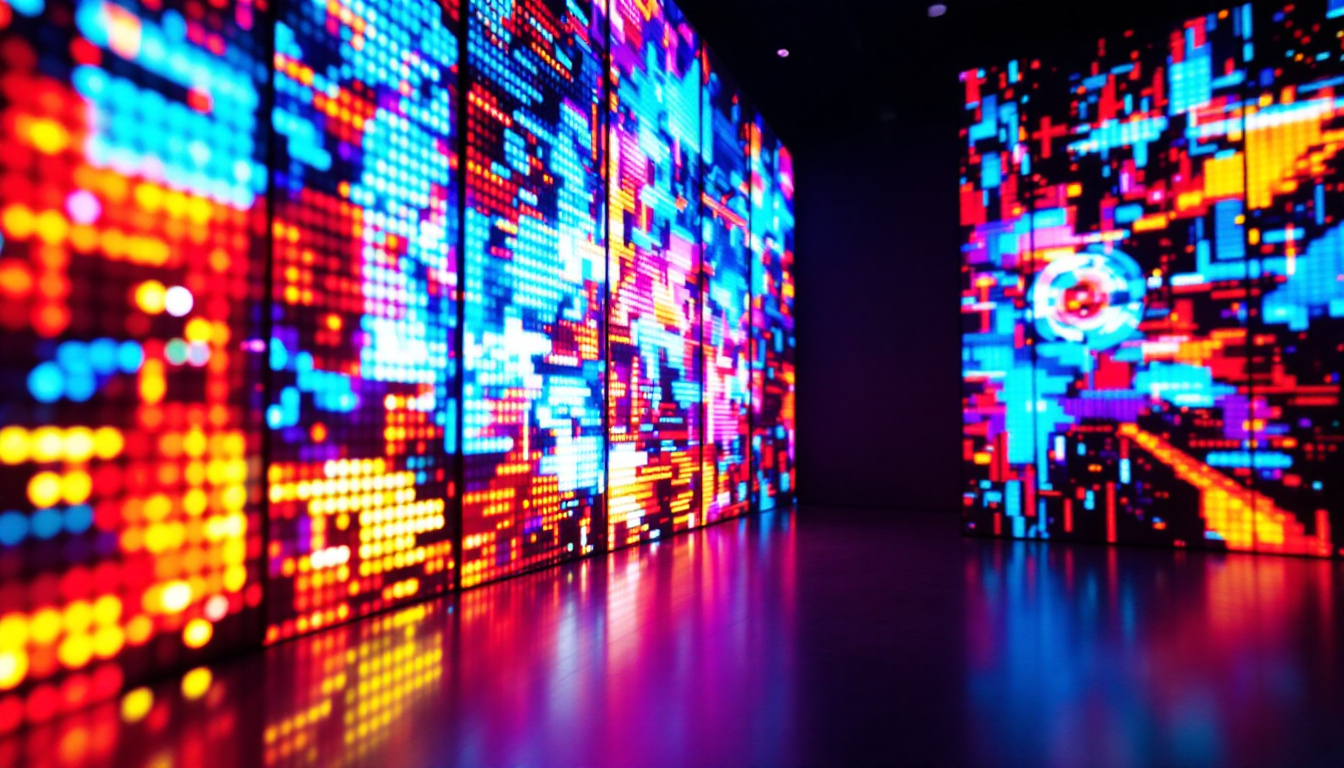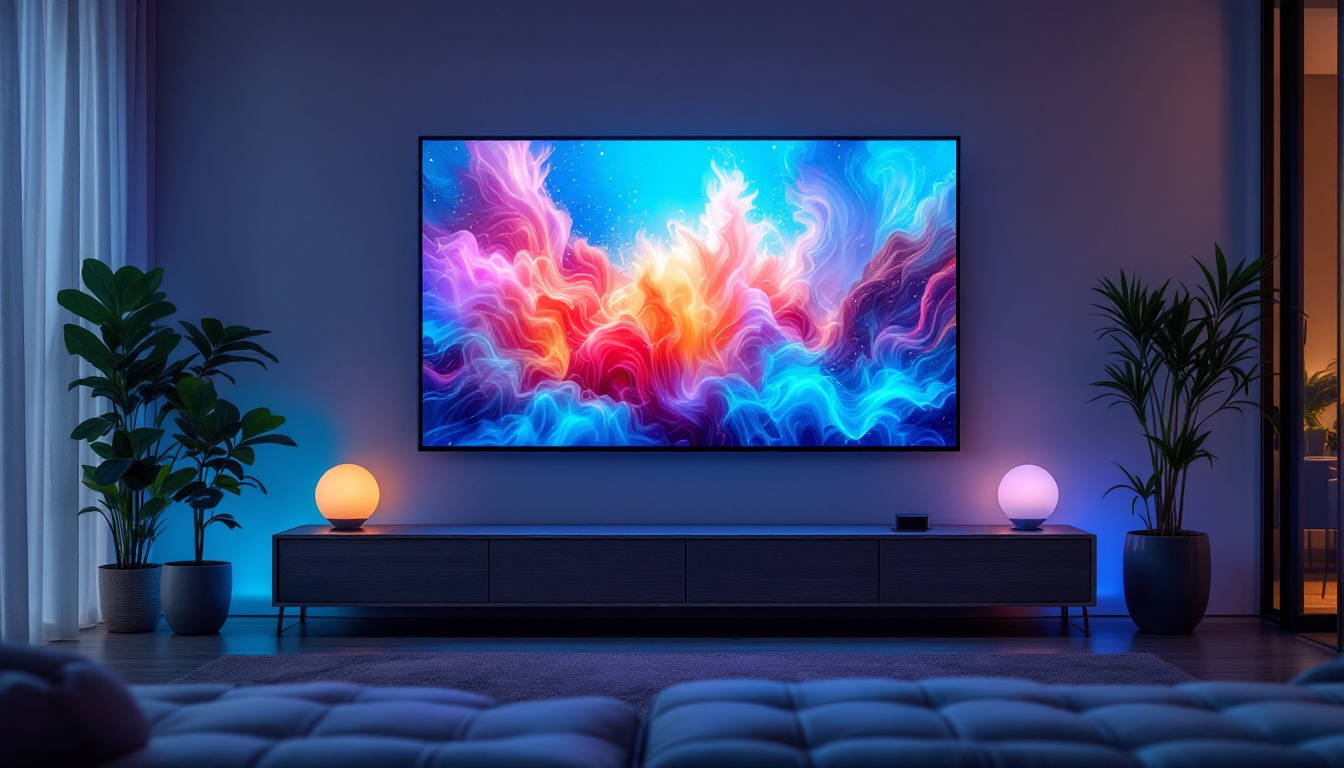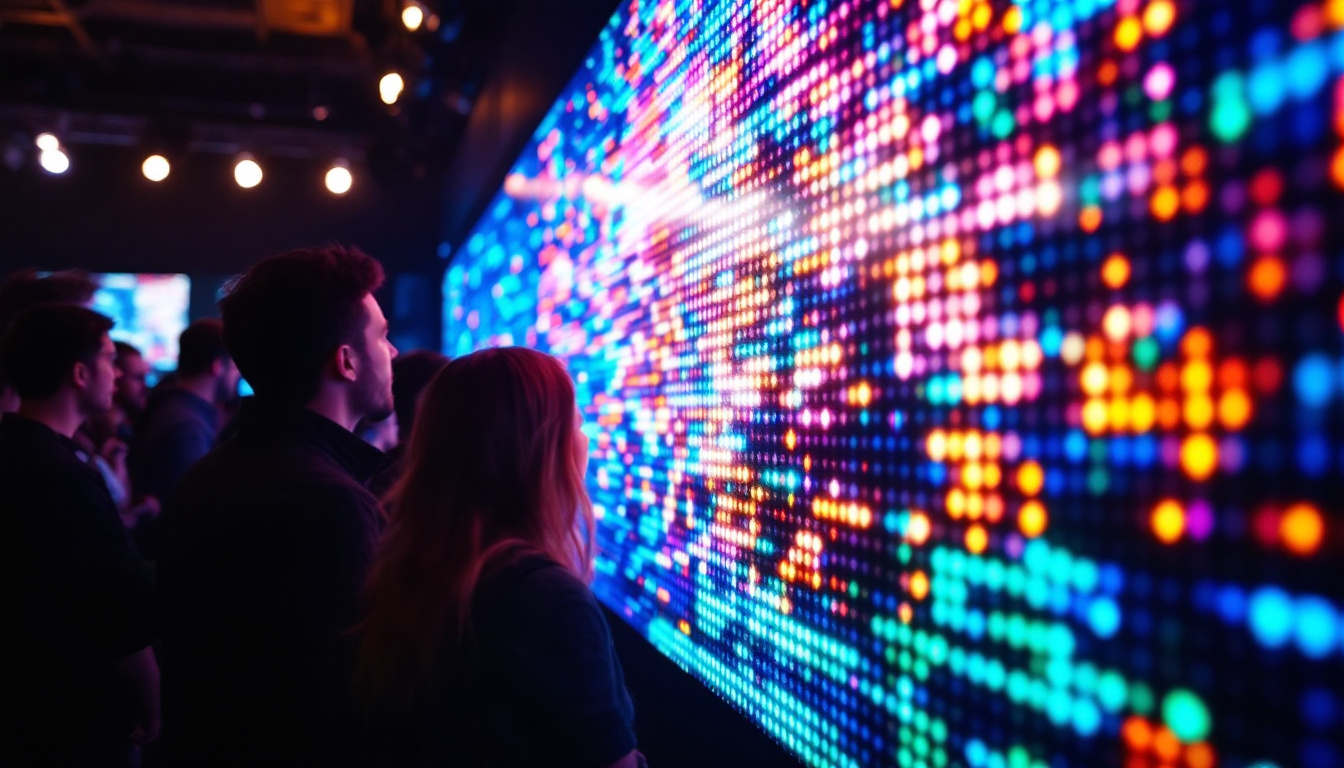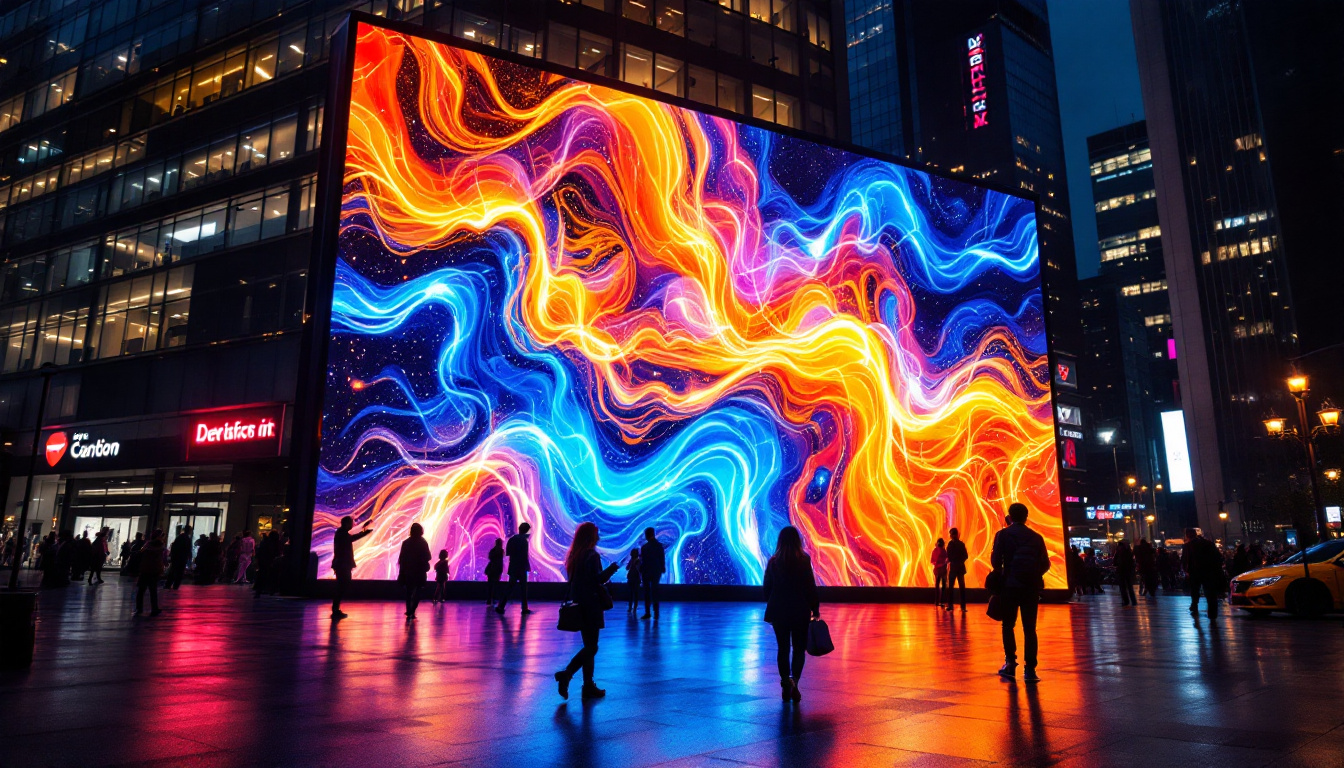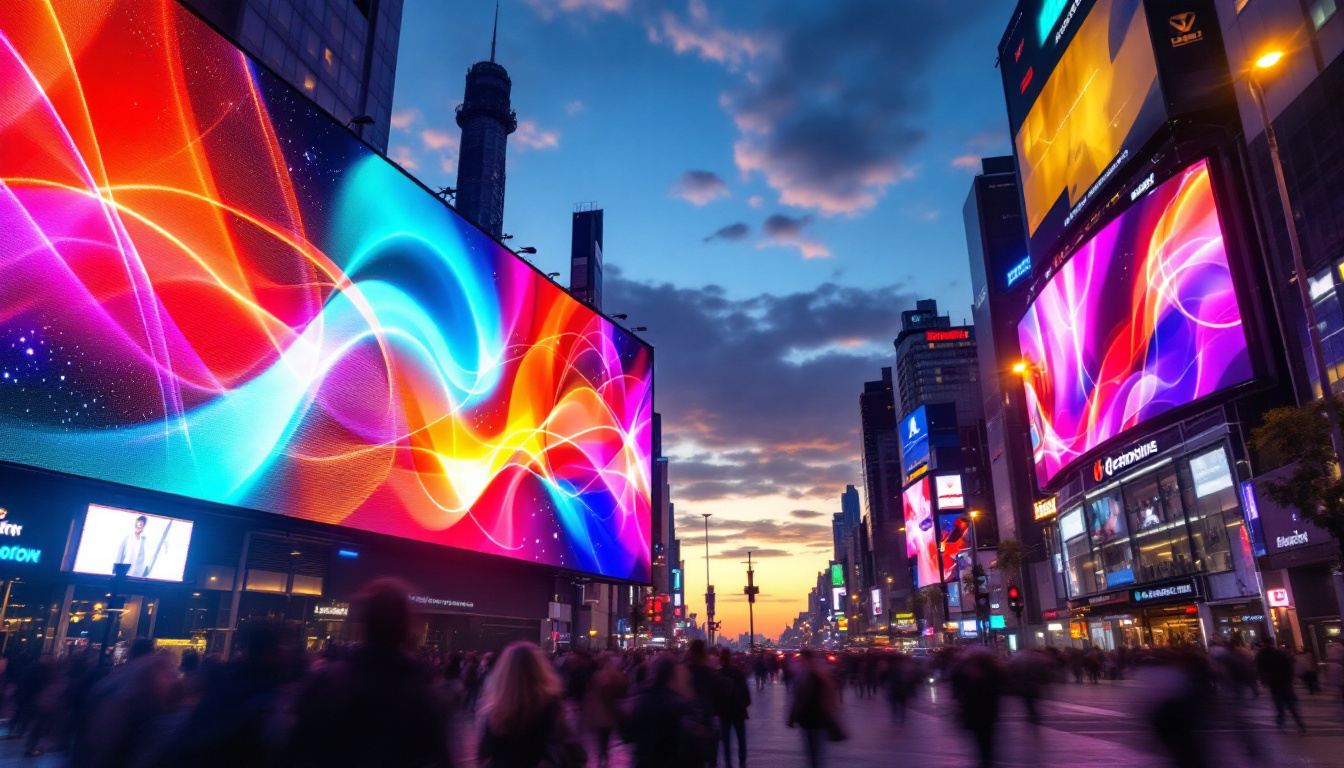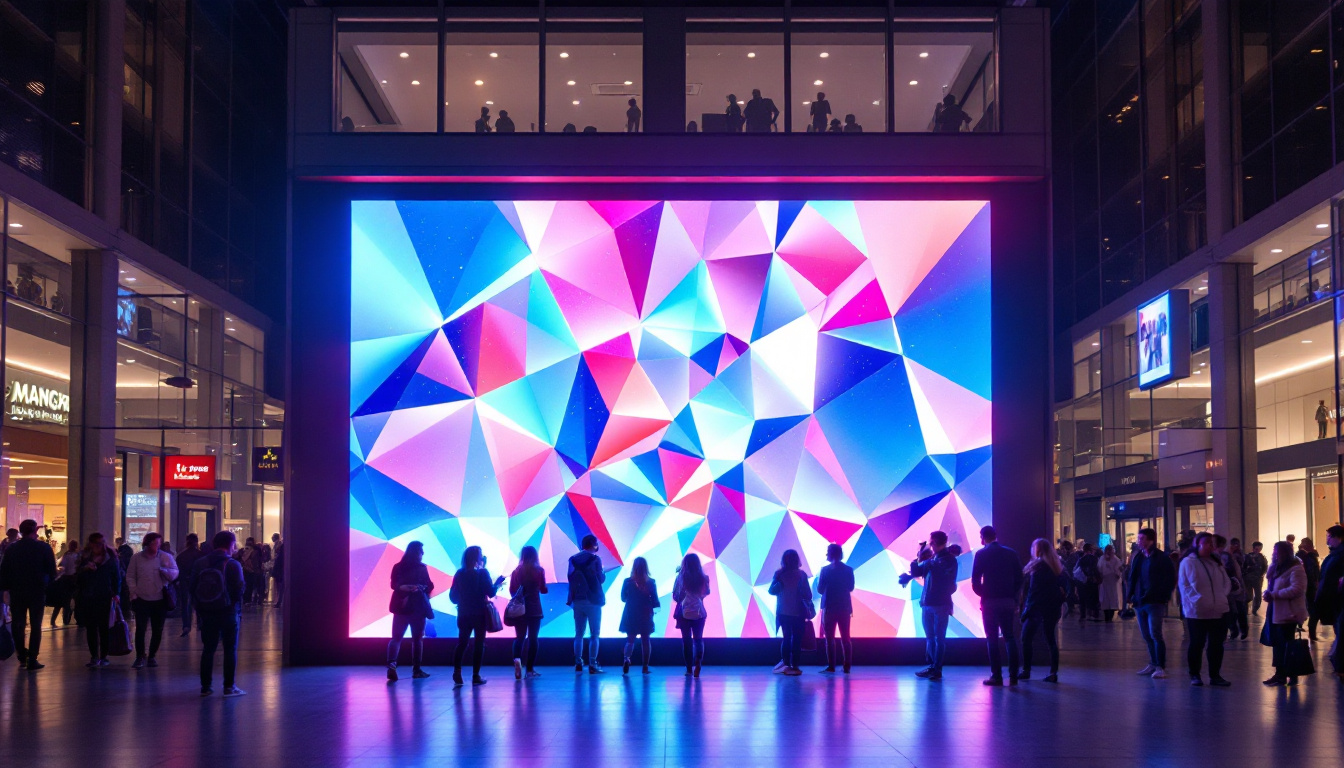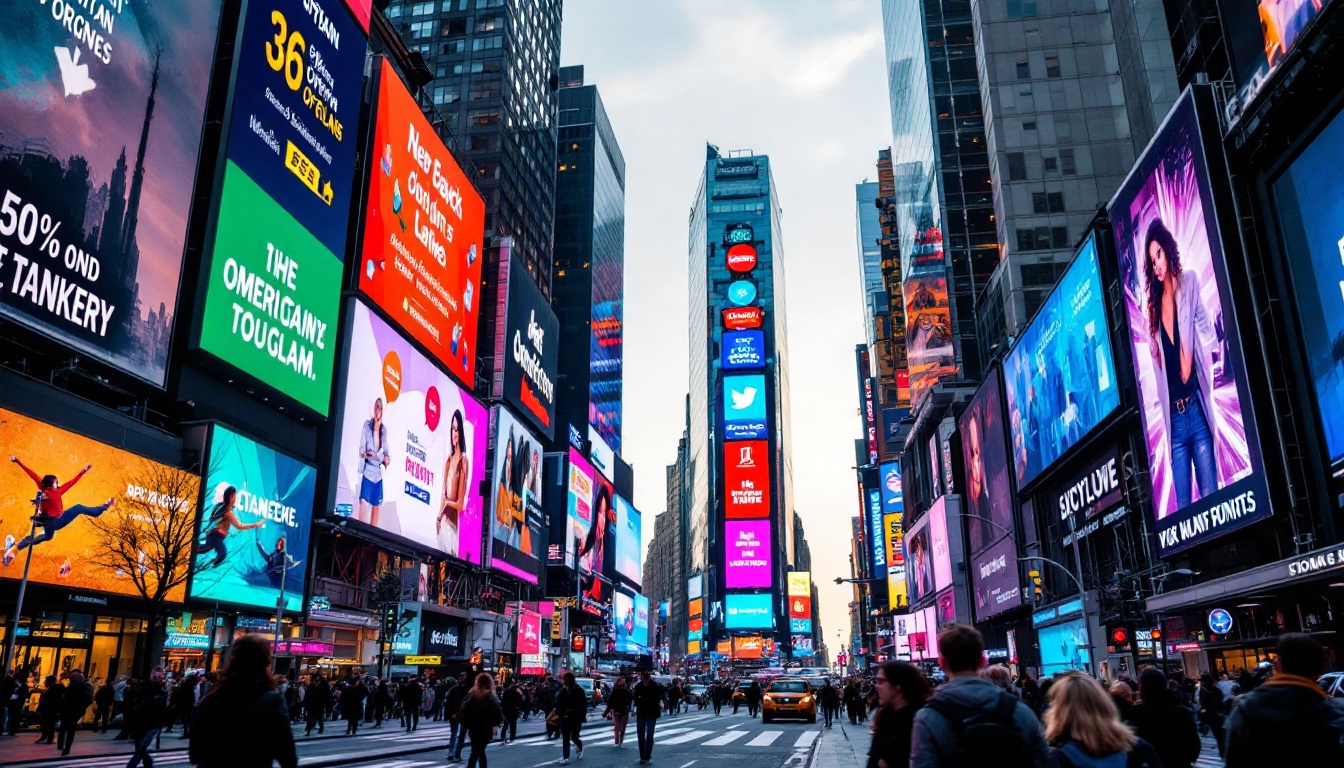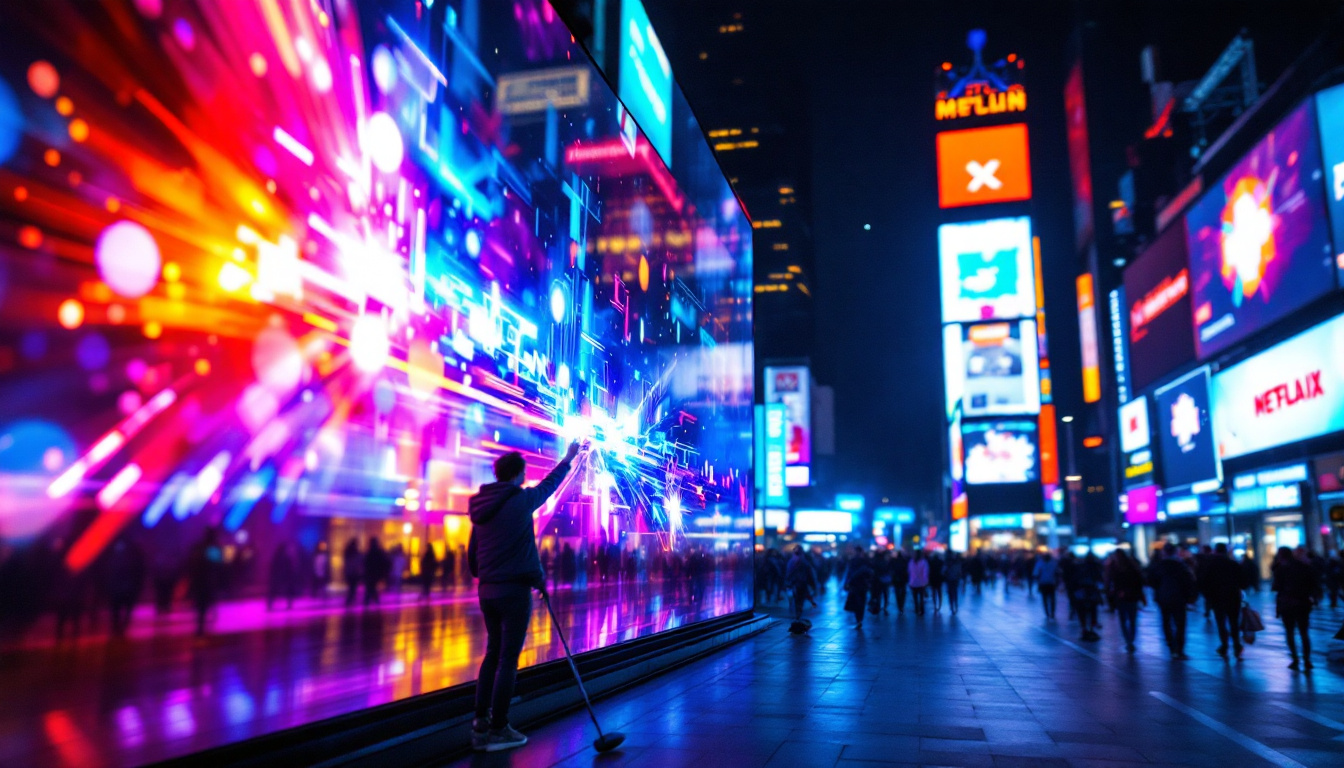In the ever-evolving landscape of technology, LED displays have emerged as a pivotal component in various sectors, from advertising to entertainment. Their versatility and efficiency have made them a preferred choice for many applications. This article delves into the intricacies of LED displays, exploring their functionality, advantages, and applications, while also addressing common misconceptions.
Understanding LED Technology
Light Emitting Diodes (LEDs) are semiconductor devices that emit light when an electric current passes through them. This fundamental principle underpins the operation of LED displays. Unlike traditional display technologies, such as LCDs or CRTs, LED displays utilize a matrix of individual LEDs to produce images and videos. The versatility of LEDs has led to their widespread adoption across various industries, from entertainment to advertising, and even in everyday household lighting solutions.
The Basics of LED Operation
At the core of LED technology is the concept of electroluminescence. When electrons recombine with holes in the semiconductor material, energy is released in the form of photons, which is visible light. This process allows for the creation of vibrant colors and high brightness levels, making LEDs suitable for outdoor and indoor applications alike. Moreover, advancements in LED technology have led to the development of RGB (Red, Green, Blue) LEDs, which can mix colors to produce a vast spectrum of hues, further enhancing their visual capabilities.
LED displays can be categorized into two main types: direct view and rear projection. Direct view displays consist of a grid of LEDs that are visible from the front, while rear projection displays use LEDs to illuminate a screen from behind. Each type has its unique advantages, depending on the intended use. For instance, direct view displays are often favored for their brightness and clarity in well-lit environments, while rear projection displays can offer a more immersive viewing experience in darker settings.
Types of LED Displays
LED displays come in various forms, each tailored to specific applications. The most common types include:
- Indoor LED Displays: These are designed for use in controlled environments, such as shopping malls, conference rooms, and theaters. They offer high resolution and color accuracy, making them ideal for detailed graphics and video content. The ability to produce sharp images and smooth motion makes them particularly popular for presentations and entertainment purposes.
- Outdoor LED Displays: Built to withstand harsh weather conditions, outdoor displays are larger and brighter to ensure visibility in sunlight. They are commonly used for billboards, sports arenas, and public events. The durability of these displays is enhanced by protective coatings and robust housing, ensuring they can endure rain, wind, and extreme temperatures without compromising performance.
- Transparent LED Displays: These innovative displays allow for a see-through effect, making them perfect for retail environments where visibility of products is essential while still showcasing advertisements. By blending digital content with physical spaces, transparent LEDs create a unique shopping experience that captivates consumers and enhances brand engagement.
In addition to these common types, there are also specialized LED displays, such as flexible LED screens that can be curved or shaped to fit unconventional spaces, and high-definition LED walls that are often used in concert venues and large-scale events. The continuous evolution of LED technology promises even more exciting developments in the future, including advancements in energy efficiency and sustainability, which are becoming increasingly important in today’s environmentally-conscious market.
Advantages of LED Displays
The popularity of LED displays can be attributed to several key advantages that set them apart from traditional display technologies. Understanding these benefits can help businesses and organizations make informed decisions when considering display solutions.
Energy Efficiency
One of the most significant advantages of LED displays is their energy efficiency. Compared to traditional lighting technologies, LEDs consume significantly less power, which translates to lower electricity bills and a reduced carbon footprint. This efficiency is particularly beneficial for large-scale installations, where energy savings can be substantial over time. Additionally, many LED displays are equipped with smart technology that allows for automatic brightness adjustments based on ambient light conditions, further optimizing energy use and extending the lifespan of the display.
Longevity and Durability
LED displays are known for their longevity, often lasting up to 100,000 hours or more. This durability is due to their solid-state construction, which makes them resistant to shock and vibration. Unlike traditional displays that may have fragile components, LED displays can withstand the rigors of outdoor environments, making them a reliable choice for various applications. Furthermore, the low maintenance requirements associated with LED technology mean that organizations can save on both time and costs, as there is less need for frequent replacements or repairs, allowing for a more streamlined operational focus.
High Brightness and Contrast
LED displays offer exceptional brightness levels, ensuring visibility even in direct sunlight. This characteristic is crucial for outdoor advertising and public displays. Moreover, the contrast ratio of LED displays is superior, allowing for deeper blacks and more vibrant colors, which enhances the overall viewing experience. The advanced color rendering capabilities of LEDs also mean that images and videos appear more lifelike, making them ideal for applications in retail environments, art installations, and entertainment venues where visual impact is paramount. Additionally, many LED displays support high-definition resolutions, further elevating the clarity and detail of the content being displayed.
Versatility in Design
Another noteworthy advantage of LED displays is their versatility in design and application. They can be configured in various shapes and sizes, allowing for creative installations that can fit any space. Whether it’s a massive video wall in a stadium, a sleek digital signage solution in a retail store, or a curved display for an immersive experience, LED technology can adapt to meet diverse needs. This flexibility extends to indoor and outdoor environments, making LED displays suitable for everything from concerts and events to corporate branding and informational kiosks.
Environmental Impact
In addition to their energy efficiency, LED displays are also more environmentally friendly than traditional display technologies. They do not contain hazardous materials like mercury, which is often found in fluorescent lights, and they are fully recyclable. This commitment to sustainability resonates with consumers and businesses alike, as there is an increasing emphasis on eco-friendly practices in today’s market. By choosing LED technology, organizations can not only improve their operational efficiency but also align themselves with a growing movement towards environmental responsibility.
Applications of LED Displays
The versatility of LED displays has led to their adoption across a wide range of industries. From advertising to transportation, the applications are diverse and continually expanding.
Advertising and Marketing
In the advertising sector, LED displays have revolutionized how brands communicate with consumers. Digital billboards and signage allow for dynamic content that can be updated in real-time, enabling businesses to respond quickly to market trends and consumer behavior. This flexibility enhances engagement and can significantly increase foot traffic to retail locations.
Entertainment and Events
LED displays are a staple in the entertainment industry, used in concerts, festivals, and sporting events. Their ability to display high-resolution video and graphics makes them ideal for creating immersive experiences. Large LED screens are often used as backdrops during performances, providing visual stimulation that complements the audio experience.
Transportation and Navigation
In the transportation sector, LED displays play a crucial role in providing real-time information to passengers. Train stations, airports, and bus terminals utilize LED screens for flight and schedule updates, ensuring travelers have access to timely information. Additionally, LED displays are used in traffic management systems to convey important messages to drivers, enhancing safety and efficiency on the roads.
Addressing Common Misconceptions
Despite their growing popularity, several misconceptions about LED displays persist. Addressing these misunderstandings is essential for making informed decisions regarding their use.
Cost Considerations
One common misconception is that LED displays are prohibitively expensive. While the initial investment may be higher than traditional displays, the long-term savings in energy costs, maintenance, and replacement make them a cost-effective solution over time. Additionally, the decreasing prices of LED technology have made it more accessible for various applications.
Color Accuracy
Another misconception is that LED displays cannot achieve the same level of color accuracy as other display technologies. However, advancements in LED technology have led to significant improvements in color reproduction. High-quality LED displays can now deliver vibrant colors and precise color matching, making them suitable for applications that require accurate color representation.
Heat Generation
Some people believe that LED displays generate excessive heat, making them unsuitable for certain environments. While it is true that LEDs produce some heat, modern designs incorporate efficient cooling systems that mitigate heat buildup. This ensures that LED displays can operate effectively without compromising performance or safety.
Future Trends in LED Display Technology
The future of LED display technology looks promising, with ongoing advancements that are set to redefine their capabilities. As industries continue to innovate, several trends are emerging that will shape the future of LED displays.
Integration with Smart Technology
As smart technology becomes increasingly prevalent, LED displays are being integrated with IoT (Internet of Things) capabilities. This integration allows for remote monitoring and control, enabling users to manage content and performance from anywhere. Such advancements will enhance the functionality and usability of LED displays across various applications.
Flexible and Curved Displays
Flexible LED displays are gaining traction, allowing for creative installations that were previously impossible. These displays can be bent and shaped to fit unique environments, offering new possibilities for advertising and artistic expression. Curved displays are also becoming more common, providing a more immersive viewing experience in theaters and event spaces.
Improved Resolution and Pixel Density
As technology advances, the resolution and pixel density of LED displays continue to improve. Higher pixel densities enable sharper images and more detailed graphics, making LED displays increasingly suitable for applications that require high-definition content. This trend will likely lead to broader adoption in sectors such as medical imaging and professional broadcasting.
Conclusion
LED displays have transformed the way information is conveyed and experienced across various industries. Their energy efficiency, durability, and versatility make them an attractive option for businesses looking to enhance their communication strategies. As technology continues to evolve, LED displays will undoubtedly play an even more significant role in shaping the future of visual communication.
Understanding the intricacies of LED technology, its advantages, and its diverse applications is essential for making informed decisions. By addressing common misconceptions and staying abreast of emerging trends, organizations can leverage LED displays to their full potential, ensuring they remain at the forefront of innovation in an increasingly digital world.
Discover LumenMatrix’s Innovative LED Display Solutions
Ready to elevate your visual communication strategy with cutting-edge LED technology? Explore LumenMatrix’s comprehensive range of LED display solutions, including Indoor and Outdoor LED Wall Displays, Vehicle LED Displays, LED Poster Displays, LED Sports Displays, Floor LED Displays, Custom LED Displays, All-in-One LED Displays, and LED Transparent Displays. Embrace the future of digital signage with LumenMatrix and create unforgettable visual experiences that captivate your audience. Check out LumenMatrix LED Display Solutions today and see how our commitment to innovation can transform your brand’s visibility.

